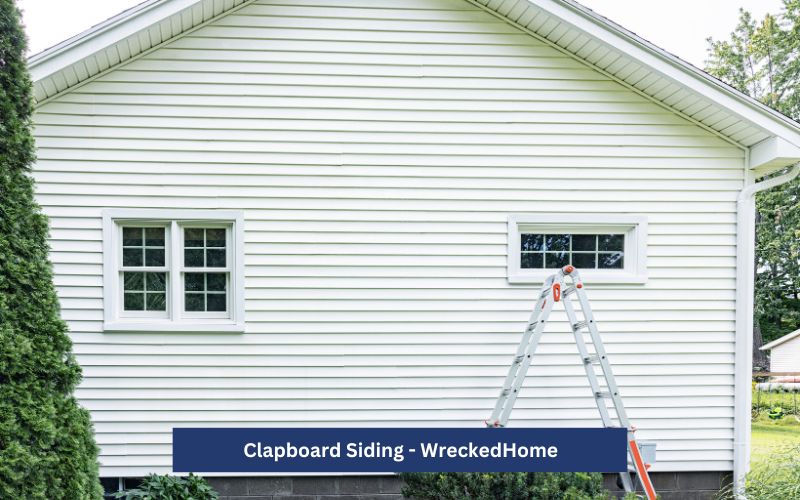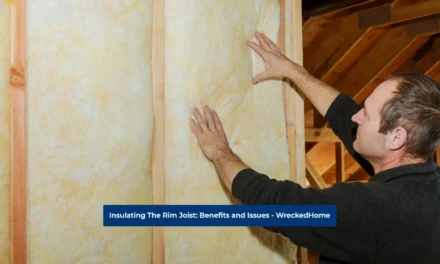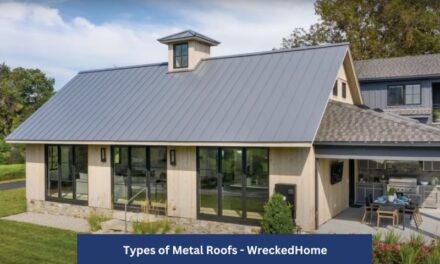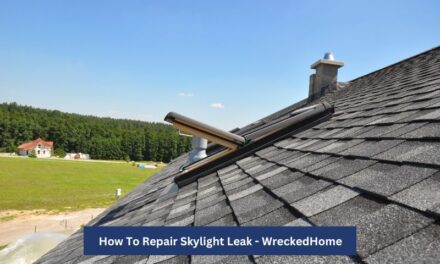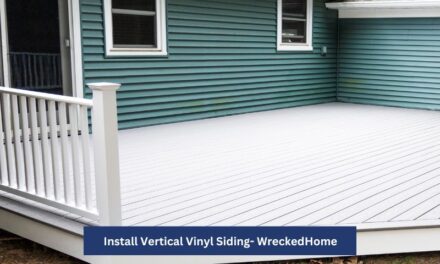Wood is one of the most liked siding materials due to its durability, shining look, and easily manageable cost. Different clapboard siding styles are available in the market that is a plus point for aesthetic lovers. One can choose any of the bevel, cedar shingle, or board and batten panels according to his/her choice.
However, using the clapboard has its pros and cons as well. So, one must be aware of the good and bad points of using such a material for his home siding before making an informed decision. Otherwise, he may have to suffer due to weather conditions and other mismatching of clapboard siding material.
Learning about all the advantages and disadvantages is very important to decide whether it’s right for your home or not. So, let’s move down to explore all its pros and cons.
What are the Advantages of Clapboard Siding?
Also known as weatherboard, bevel, and lap siding, the clapboard siding offers unique benefits that make it one of the most loved materials. Here are the most obvious advantages.
Aesthetic Appeal
Aesthetic beauty of the wooden or clapboard siding is one of the unique benefits for those who have a craze for the physical appeal. The beautiful color and versatile style availability makes it a unique siding material.
Availability in Different Styles
The wooden clapboard siding is easily available in different versatile styles. So, it makes your choice flexible when it comes to the physical appearance of your home walls and roof. You can choose from all these varieties as per your aesthetic taste.
Customization Flexibility
A plus point that makes the clapboard as one of the most loved siding materials is its easy customization. This way you can paint this wooden siding material according to the color of your home interior or exterior.
Easy and Cost Effective Maintenance
The routine maintenance like painting and other fixtures of the clapboard siding are relatively easy and cheaper. So, you can repair it easily as compared to the other cladding siding materials.
Eco Friendly Material
The most loved feature of the clapboard material is that it’s environmentally friendly. It’s renewable, so industries can use their remains to make the newer sheets.
High Durability
Another quality of the weatherboard siding material that makes it versatile is its high durability. If installed and maintained properly, this siding will serve you for 20-40 years.
Weather Resistance
Clapboard siding acts as a protective layer for your home that safeguards it against the severe environmental conditions like heavy rains, storms, or snow falling. This way you can maintain the original beauty and value of your home.
Insulates the Home
You can install the clapboard along with any insulation material to minimize the heat loss from your home. It can prove an effective way of energy preservation.
Maintains Property’s Value
If you maintain the clapboard siding of your home, its resale value will remain high. So, a little investment will preserve your property’s value.
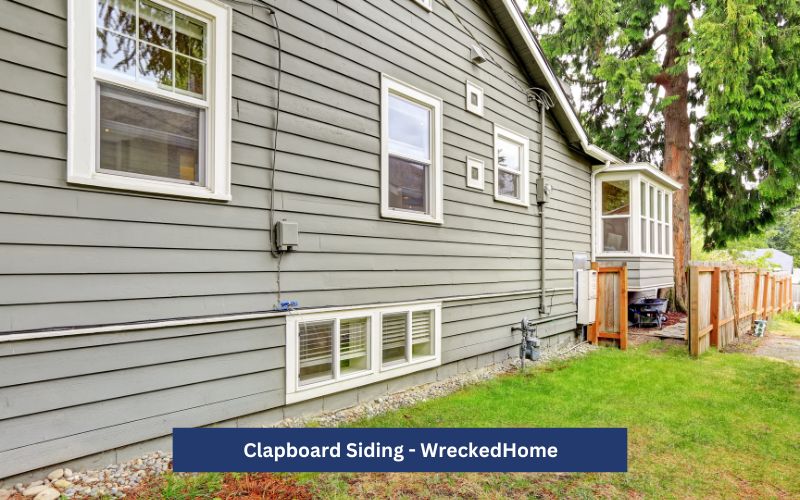
What are Disadvantages of Clapboard Siding?
Just like its benefits, clapboard siding has some drawbacks as well. And it’s important to weigh the pros and cons before making an informed decision. This practice will save you from post installation repentance and loss. Here are the most obvious disadvantages material;
Frequent Maintenance
Possibly, you may have to face a tough time in maintaining and repairing the clapboard siding. Though the repair is relatively easy and low cost, the frequency of maintenance may disturb you.
Tricky and Expensive Installation
Wood siding demands special skills and tools to meet perfection. So, it’s a little bit trickier than installing some other materials. That’s why the civil engineer who will install the siding may demand high wages. A typical cost estimate for a 1250 square feet siding installation ranges between $6500-$7500.
Rotting Threat
Most synthetic siding materials don’t get rotten. However, wood can be exposed to damage if you ignore its care and maintenance.
Environmental Concerns
Clapboard is susceptible to moisture and other severe environmental conditions. So, it must be sealed and installed properly to avoid any damage.
Vulnerable to Termites
Wood is sensitive to the termite attacks; especially, moss and fungus. However, different chemicals are available that discourage such attacks.
Fire Resistance Limitations
Wood tends to have poor fire resistance as compared to other siding materials. So, it’s not an ideal material for areas that are susceptible to wildfire.
Visit our store for 10% off our Home Maintenance products here.
Who Should Use Clapboard Siding?
Clapboard siding has exceptional benefits that make it ideal for special groups of people. Here are some features that will avail the maximum benefit by using such a siding material;
- Clapboard siding has a unique aesthetic appeal, so it’s an ideal choice for admirers of aesthetic beauty.
- Those who are consistent and regular in maintenance tasks should go for such a material. These require regular maintenance, so such a homeowner who loves caring for his property will look after it properly.
- It’s a good option for those who love maintaining their property’s original shine and value.
- People with special concern about the environment should go for clapboard siding as it is safe for the ecosystem.
- Clapboard will last for relatively longer times in zones that don’t feature harsh environments.
- Those looking for a budget friendly but durable siding should go for clapboard.
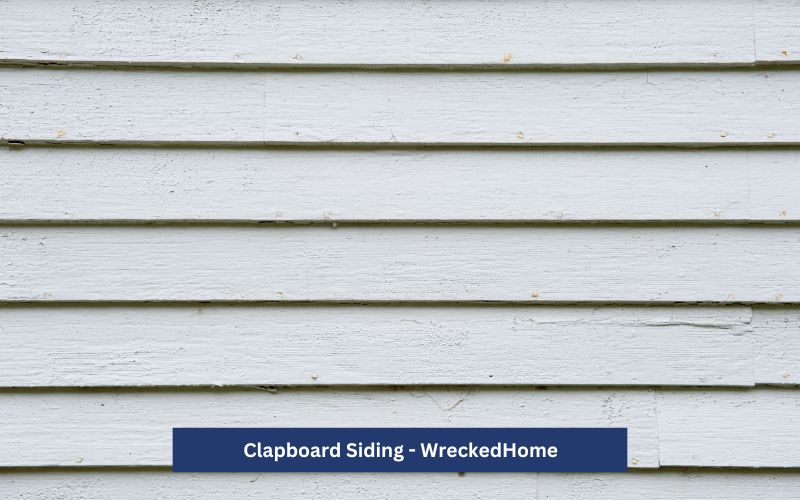
Who Should Not Use Clapboard Siding?
Based on its drawbacks, using clapboard siding may not be an ideal choice for some homeowners. Here is the list of owners who should avoid using such a material for their home siding;
- Those who don’t love daily maintenance concerns should not go for clapboard siding.
- If one cannot manage the installation cost, it’s good to go for cost friendly options.
- Clapboard siding isn’t good for harsh climates as it can’t withstand such a situation. So, people residing in such areas should not use this material in their homes.
- Maintaining the clapboard siding is hard and time consuming. That’s why those with a busy schedules should opt for any siding material that’s easy to maintain. So, clapboard is not the one for them.
- People who are not much concerned about the aesthetic appeal can go for some other cost effective siding materials as compared to the clapboard.
- If you’re an investor looking for a quick return on their property may opt for other materials that will fit well to their budget.
- If you reside in an area where you don’t need the insulation much, clapboard is not a good option for you.
Is Clapboard Siding the Right Choice for You?
Deciding whether clapboard siding is right for you or not depends upon your personal needs and preferences. It is a good siding material for people who love combo of physical appeal and durability. Moreover, it will be a good choice for people residing in optimal climate areas.
But its installation is a tricky and expensive part of the procedure. Also, it demands proper care and maintenance for long term service. So, it’s not good to go for clapboard if you are a person with a tight daily schedule and on budget.
How Can You Inspect Your Siding?
Inspecting your home siding is a good habit, as you can repair any damage instantly. This way your home’s appeal and value will remain intact for a long period. Here are some practical inspection tips to maintain your siding material;
- Check for cracks, splitting, or any other damage regularly.
- Paint is the protector for appeal and durability of the siding, so occasionally inspect it to keep in well in shape.
- Oil or other such fatty stains are worst enemies of both paint decor and siding itself. So, ensure there is no such damage on your building.
- Pay special attention to siding installation because it’s the core of durability and shine.
- Always go for corrosion resistant nails for attachments.
- Ensure leaving enough gaps for natural expansion and shrinkage to avoid cracks.
- Keep an eye on the moisture effects and fix any damage instantly after noticing.
- It’s good to be familiar with different siding types and then choosing the right one for you. It will be a long term investment for you!
Conclusion
In conclusion, clapboard siding has both positive as well as negative aspects. It’s good to weigh these pros and cons of any siding material before finalizing your choice. Remember all this largely depends on your personal needs and preferences, so it’s good to evaluate them deeply before heading towards the choice phase.
Generally, clapboard siding materials prove very effective for people who love physical appeal, durability, and can manage occasional damages. But it tends to be a wrong option for those looking for an easy to maintain siding option because it may need frequent maintenance. So, focus on all these aspects deeply before landing any material!
For any repairs, installations, builds, or questions; We recommend you to hire a professional. Find A Pro Near You Here!
FAQs
What is clapboard siding called?
Clapboard siding has some other names as well like lap siding, bevel siding, and weatherboard siding. All these are the names of a single material, so don’t get confused with them.
What is the difference between clapboard and wood siding?
Typically, clapboard siding tends to be narrow but long wood planks that are arranged horizontally on the walls or roofs. But wood siding is a broader category of the siding material that’s available in different styles and colors.
What is the best clapboard siding?
Redwood and Western cedar are considered the best clapboard siding options in the market. These materials guarantee both durability and aesthetic appeal.

